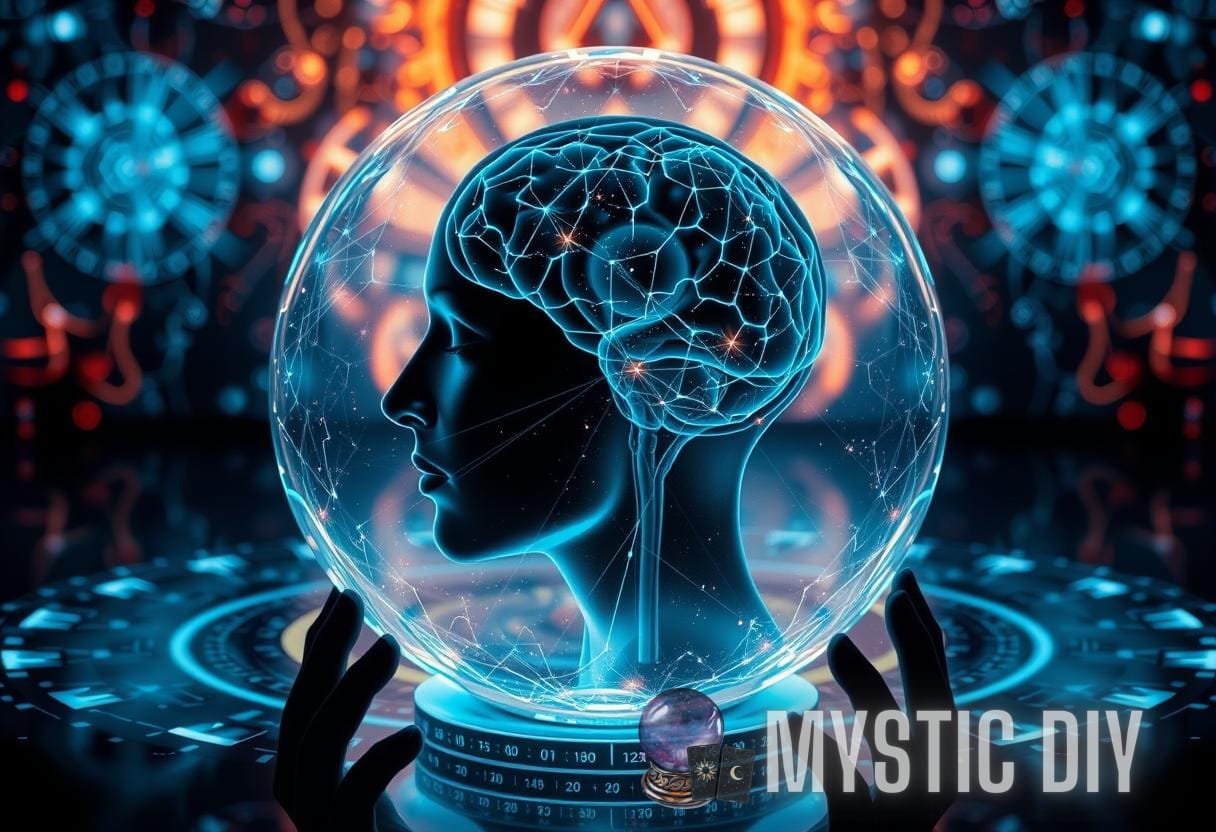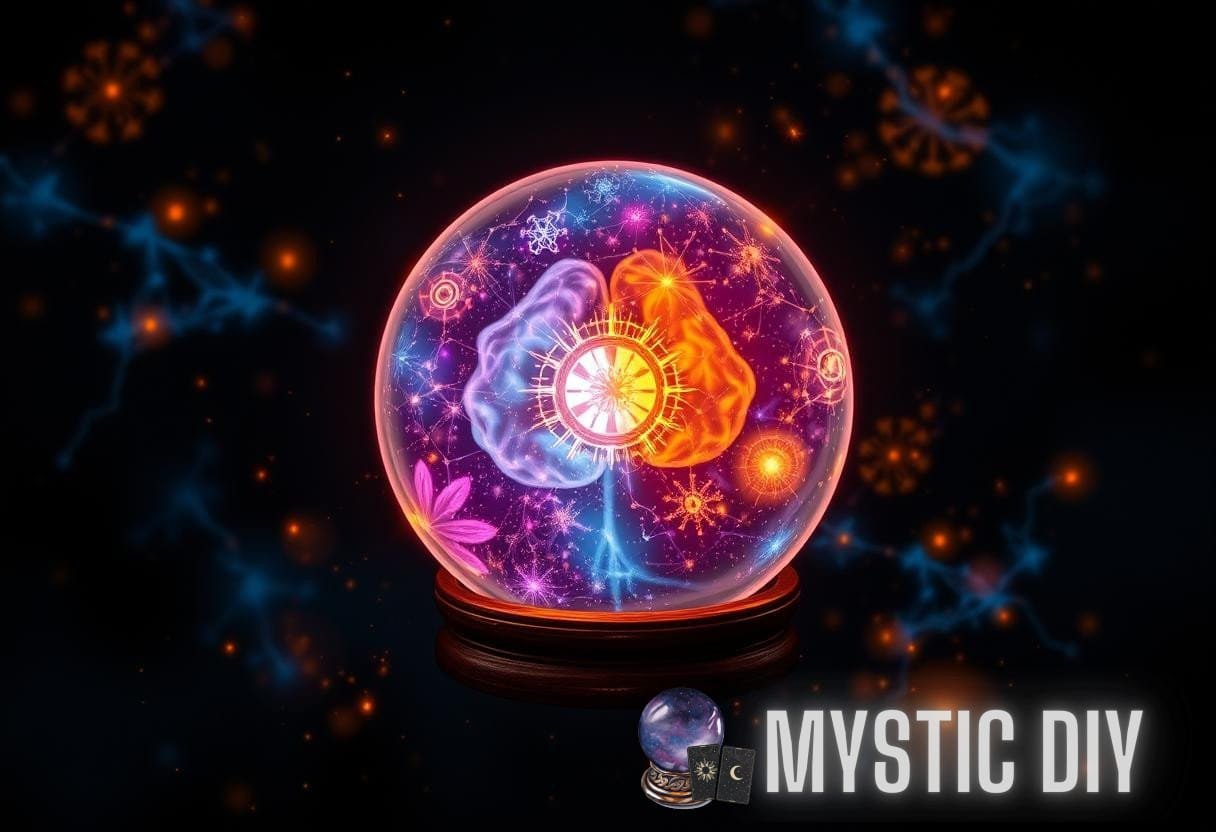Illuminating the Mind’s Eye: The Interplay of Neural Mechanisms and Crystal Ball Scrying Techniques
Crystal ball scrying has long been regarded as a mystical art, engaging seekers in a quest to delve deep into the inner machinations of the mind and beyond. Modern scientific inquiry has increasingly sought to understand how the practice connects with cognitive functions, specifically through neural mechanisms. By investigating the technique through the lens of neuroscience, we can better appreciate its complexities and the neural scrying insights it offers.
The History and Cultural Significance of Crystal Ball Scrying
Crystal ball scrying, or crystallomancy, has roots in various ancient cultures, evolving through time into a popular method of divination. Historical records suggest that the earliest known use of crystal balls dates back to the Roman Empire, where they were employed for prophetic visions. The art has since permeated different cultures, appearing in the folklore of the Middle Ages and becoming a staple in occult practices.
Factors contributing to its significance include:
- Cultural Rituals: Many cultures used scrying as a method to connect with spiritual realms.
- Artistic Expression: Crystal balls have historically been depicted in literature and art as tools of mystics.
- Psychological Exploration: The reflective surface of the crystal offers a metaphor for introspection and self-exploration.
The Role of Neuroscience in Understanding Scrying
Neuroscience provides invaluable insights into the cognitive processes at play during crystal ball scrying. The practice engages various neural pathways, particularly those associated with visualization, intuition, and memory. These processes are critical to generating what scryers interpret as visions.
Visualization and the Brain
Research shows that visualization techniques activate the occipital lobe, the region responsible for visual processing. When individuals gaze into a crystal ball, they enter a meditative state that enhances this brain activity. Studies have demonstrated that visualization can:
- Enhance creativity by promoting divergent thinking.
- Improve problem-solving skills through enhanced cognitive flexibility.
Intuition: A Neural Perspective
Intuition, often described as “gut feeling,” plays a significant role in the interpretation of scrying images. The brain regions linked to intuition are primarily intertwined with the limbic system, which governs emotional responses. Research has shown that:
- Intuitive insights can emerge from subconscious processing.
- Emotions significantly influence decision-making and interpretation processes.
Neurological Mechanisms Involved in Scrying Techniques
As we delve deeper into the neural mechanisms underpinning crystal ball scrying, we can identify specific cognitive processes involved. Understanding these processes provides clarity on how scrying might facilitate revelations or insights for the practitioner.
Focus and Concentration
One key element of successful scrying is the ability to focus. According to the National Institute of Child Health and Human Development, there are several brain structures associated with concentration, including:
- The prefrontal cortex, responsible for attention and decision-making.
- The parietal lobe, involved in spatial orientation and sensory processing.
Memory and Recall during Scrying
Memory plays a pivotal role in interpreting visions experienced during scrying. The hippocampus is crucial for the formation and retrieval of memories, and this may contribute to enhancing the practitioner’s ability to recognize patterns within the visions they perceive. Cognitive research highlights that:
- Individuals’ recall is enhanced when they engage in visualization practices.
- This cognitive enhancement can be observed through neuroimaging studies.

Neural Scrying Insights: The Intersection of Science and Divination
The concept of neural scrying insights embodies the intersection of mystical practices and scientific understanding. Practitioners of scrying may experience unique cognitive phenomena that can be explained through neural mechanisms. Immersive visualization, emotional resonance, and reflective thinking are all integral components of this experience.
Case Studies in Scrying and Cognitive Function
Several studies have explored the cognitive implications of scrying techniques. For example, a 2018 study published in the journal Cognitive Psychology investigated how participants utilizing crystal balls exhibited increased brain activity in regions associated with reflective thinking and creative exploration. The subjects reported heightened levels of insight after their scrying experience, correlating with the neural data collected during the experiments.
Practical Techniques for Effective Scrying
To harness the potential insights from crystal ball scrying, practitioners can employ several techniques that leverage cognitive neuroscience principles:
Creating the Right Environment
Setting up an optimal scrying environment significantly impacts the experience. Some tips include:
- Dim lighting can help focus attention on the crystal’s surface.
- Minimize distractions for a deeper meditative state.
- Use calming scents or sounds to enhance relaxation.
Guided Visualization Techniques
Combining guided visualization with the practice of scrying can yield profound results. Effective guided techniques can involve:
- Setting clear intentions before beginning.
- Utilizing deep breathing exercises to facilitate relaxation.
- Engaging in mental imagery exercises that promote focus.
Potential Therapeutic Applications of Crystal Ball Scrying
The psychological benefits of crystal ball scrying extend to therapeutic practices. Some mental health professionals are exploring how the reflective nature of the crystal can aid in therapy. This application is tied to the concepts of visualization and self-exploration, both crucial for therapeutic healing. Research indicates that:
- Visualization techniques can effectively reduce anxiety and stress.
- Engaging in self-reflection through visualization may enhance emotional understanding.
Cognitive and Emotional Benefits of Scrying Practices
Regular practice of crystal ball scrying can confer numerous cognitive and emotional benefits. As individuals develop their skills, many report improvements in:
- Cognitive Flexibility: Enhanced ability to adapt to new situations and think creatively.
- Self-Awareness: Increased understanding of personal thoughts and feelings.
- Intuition and Insight: Heightened ability to perceive underlying patterns and meanings in life.
Conclusion: The Future of Scrying and Neuroscience
The interplay between neural mechanisms and crystal ball scrying offers a fascinating glimpse into the cognitive and emotional dimensions of this ancient practice. By exploring the scientific underpinnings, we unlock profound implications for understanding consciousness, intuition, and the mind’s eye, while simultaneously providing an avenue for developing personal insights through the mystical art of scrying. As this field evolves, ongoing research will enrich our understanding of the ways in which practical techniques can foster personal growth and emotional well-being.



